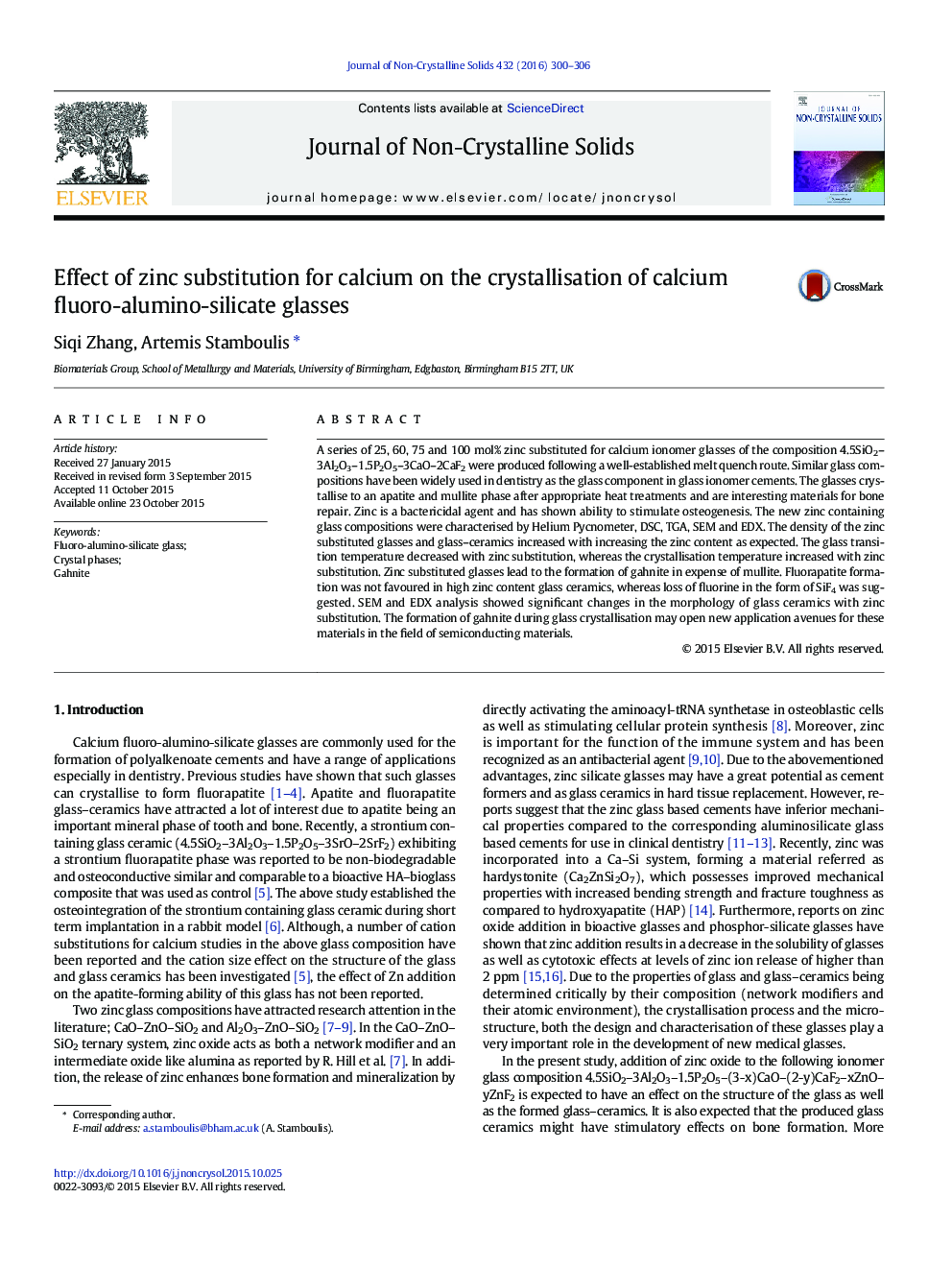| Article ID | Journal | Published Year | Pages | File Type |
|---|---|---|---|---|
| 1480418 | Journal of Non-Crystalline Solids | 2016 | 7 Pages |
•The ionic radius of zinc is smaller than the ionic radius of calcium.•This has an effect on the structure and the crystallisation of substituted glasses.•The atomic environment of zinc has an effect on the structure of glasses.•Gahnite and calcium zinc phosphate are formed with increasing zinc substitution.•Mullite and fluorapatite formation was not favoured with increasing zinc substitution.
A series of 25, 60, 75 and 100 mol% zinc substituted for calcium ionomer glasses of the composition 4.5SiO2–3Al2O3–1.5P2O5–3CaO–2CaF2 were produced following a well-established melt quench route. Similar glass compositions have been widely used in dentistry as the glass component in glass ionomer cements. The glasses crystallise to an apatite and mullite phase after appropriate heat treatments and are interesting materials for bone repair. Zinc is a bactericidal agent and has shown ability to stimulate osteogenesis. The new zinc containing glass compositions were characterised by Helium Pycnometer, DSC, TGA, SEM and EDX. The density of the zinc substituted glasses and glass–ceramics increased with increasing the zinc content as expected. The glass transition temperature decreased with zinc substitution, whereas the crystallisation temperature increased with zinc substitution. Zinc substituted glasses lead to the formation of gahnite in expense of mullite. Fluorapatite formation was not favoured in high zinc content glass ceramics, whereas loss of fluorine in the form of SiF4 was suggested. SEM and EDX analysis showed significant changes in the morphology of glass ceramics with zinc substitution. The formation of gahnite during glass crystallisation may open new application avenues for these materials in the field of semiconducting materials.
